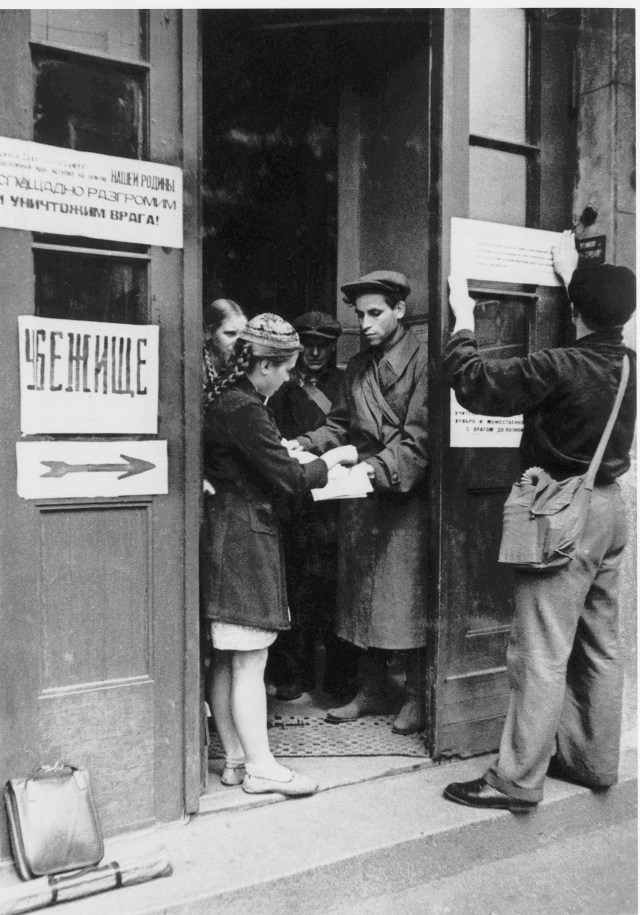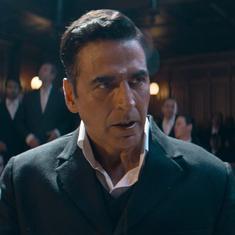The stunning 50-year transformation of Soviet photography
From the politicised photography of the collective October in the early 20th century to the World Press Photo nominated works of Vladimir Vytkin in the 1980s.

Technology decides everything. May Day, 1930s.(Boris Ignatovich/Lumiere Brothers Center for Photography)
Diagonal shots, bold cropping – these are some of the techniques used by the infamous left-wing photography collective called October. Their motto was: “New times demand new forms.” October sought to create a new language of photography, but faced a lot of criticism from other photographers and later from the government for their lack of interest in people and for their focus on abstract forms.

A stairwell in a dormitory, 1929.(Boris Ignatovich/Lumiere Brothers Center for Photography)
Debates surrounding the October photography collective marked the beginning of politicised photography in the Soviet Union.
In 1932, the USSR government issued an edict “on literary and artistic organizations”, and photographers shifted their focus to socialist realism. The October group was disbanded.

Youth, 1937.(Boris Ignatovich/Lumiere Brothers Center for Photography)
This photo by Boris Ignatovich shows how left-wing photographers shifted towards socialist realism, which stipulated that a photograph has to be bigger than a depiction of reality: it must represent a dream, a symbol, a communist ideal. This photo is an iconographic depiction of the youth and beauty of a Soviet person.

No name (Refuge). June 1941.(Alexander Ustinov/Lumiere Brothers Center for Photography)
Above is the work of renowned photojournalist Alexander Ustinov, who photographed the front lines and the home front during World War II. Pictured here are public order volunteers working in Moscow during the first days of the war.

Everything for victory, 1941.(Alexander Ustinov/Lumiere Brothers Center for Photography)
Ustinov moved westward with the Soviet troops and photographed some of the main chapters of World War II. He made it to Berlin and photographed the meeting of Soviet and American soldiers on the Elbe River on April 25, 1945.

A commissar continues the battle, 1944.(Ivan Shagin/Lumiere Brothers Center for Photography)
After the war, Soviet war correspondent Georgiy Lipskerov said, “A good photograph is like a good bullet.”

Death in battle, 1941.(Anatoly Garanin/Lumiere Brothers Center for Photography)
During the war, the styles of different photographers began to converge into one unified style. The government issued protocols for each stage of the war, detailing what should be depicted and how. Photography was an instrument of foreign and domestic policy. During the first years of the war, newspapers published images that inspired anger towards the enemy.

Germany, 1945.(Dmitri Baltermants/Lumiere Brothers Center for Photography)
Dmitry Baltermansh is one of the few Soviet photographers whose works were exhibited in London and New York during the 1960s. He was an expert air-brusher and knew how to create realistic photo-collages. The light from the window pictured above symbolizes the coming peace.

The hands of a soldier, 1929.(Arkady Shaikhet/Lumiere Brothers Center for Photography)
Shaikhet’s series called “Hands” has been lost almost entirely. Some of the photos from this series can be found in the archives of the magazine Soviet Photos.

The hands of a manicurist, 1929.(Arkady Shaikhet/Lumiere Brothers Center for Photography)
In the 1930s, Soviet photographers focused on developing “series,” and the “Hand series” by Arkadiy Shaikhet was one of the most important developments of this genre.

From a report about cameras, 1959.(Vladimir Stepanov/Lumiere Brothers Center for Photography)
The story – “Start” – of the production of the Soviet camera was shot by Vladimir Stepanov in 1959 for the magazine Soviet Photos.

From a report about cameras, 1959.(Vladimir Stepanov/Lumiere Brothers Center for Photography)
The photos detailing the production of the Soviet camera “Start” were published in a piece which talked about all the latest developments in Soviet camera-making at the time.

Khrushchev and Castro have lunch at a kolkhoz in Georgia, 1963.(Vasily Egorov/Lumiere Brothers Center for Photography)
Above is a photo from Fidel Castro’s 1963 visit to the Soviet Union. Over 38 days, Castro traveled all over the country. He was the only state leader to have accomplished such a feat. The trip was documented in detail by Soviet newspapers and magazines. This picture is from a lunch in Georgia.

The Twelfth Symphony, 1961.(Vsevolod Tarasevich/Lumiere Brothers Center for Photography)
This is an infamous portrait of composer Dmitry Shostakovich. The photo made way for a reconsideration of portraiture: instead of going for an official shot of a posing Shostakovich on stage, photographer Vsevolod Tarasevich found out where the composer rested between performances and took this shot in secret.

The duel. From the series “Moscow State University.” 1963(Vsevolod Tarasevich/Lumiere Brothers Center for Photography)
The political thaw of the 1960s brought with it a new romanticism in photography.

University gymnastics. Moscow, 1973.(Alexander Abaza/Lumiere Brothers Center for Photography)
This collage of four different photos turns a gymnastics routine into an entire alphabet of gestures.

Not my doggone business. 1965(Vladimir Bogdanov/Lumiere Brothers Center for Photography)
In the late 1950s, photography became a popular pastime and many photo clubs for amateurs emerged. Vladimir Bogdanov started as a newbie in one of these clubs and quickly started publishing his work in various newspapers and magazines. This photo made him famous.

From series No. 318. 1969(Vladimir Bogdanov/Lumiere Brothers Center for Photography)
Alexandras Matsiyauskas is one of the founding fathers of the Lithuanian school of photography. Lithuania was known in the Soviet Union as “the photography republic.” Unlike other Soviet photographers, Lithuanians were free to choose their subjects and could work on one topic for many years. Alexandras Matsiyauskas worked on his series “Village markets” for two decades.

Behind the scenes at the Bolshoi Theater, 1983.(Vladimir Vyatki/Lumiere Brothers Center for Photography)
Vladimir Vytkin was a jury member of the famous international World Press Photo contest three times, and was a prizewinner six times. He got his first nomination in the World Press Photo context in 1983 for his work “Backstage in big ballet.” As a result of his international experience, he criticised the lack of eventfulness in Soviet photographs in a series of articles published in the 1980s.
This article was originally published on Qz.com.









